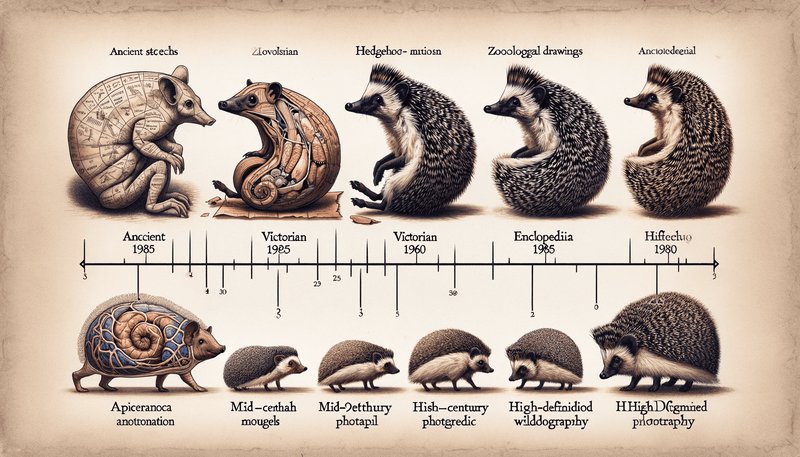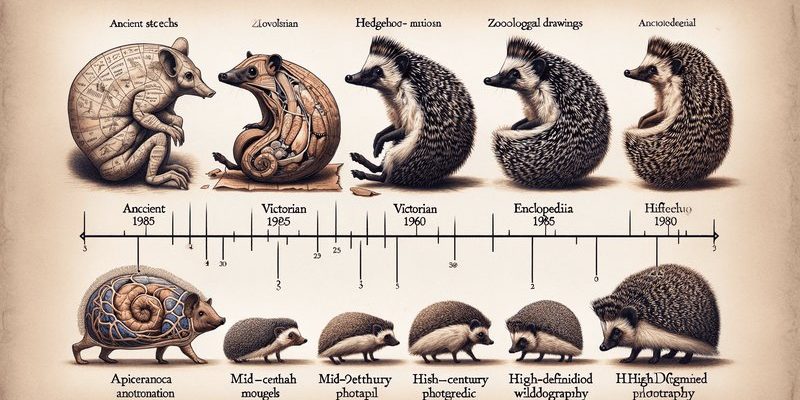
Imagine a time long before hedgehogs roamed the Earth, when their ancestors were likely scurrying about in the shadows of towering dinosaurs. It’s amazing to think about how these little mammals survived through various environmental changes, not to mention a few cataclysmic events. In this journey, we’ll explore their roots, adaptations, and the interesting path that led to the hedgehogs we’re familiar with now.
The Ancestry of Hedgehogs
Hedgehogs belong to the family Erinaceidae, which has a rich and diverse background. Their earliest ancestors are believed to have appeared over 15 million years ago during the late Miocene epoch. Imagine these primitive mammals living among the lush forests and open plains. They were small, insect-eating creatures that bore a resemblance to today’s hedgehogs but lacked the distinctive quills.
One of the key events in the evolutionary history of the hedgehog was the divergence of the Erinaceidae family from their closest relatives, the gymnures, or moonrats, over 18 million years ago. You might be wondering how this family branched out. The ancestors of hedgehogs adapted to the changing climates and environments in Europe, Asia, and Africa, leading to the unique species we see in those regions today.
Over time, hedgehogs developed distinctive features such as their quills for protection. These quills weren’t just for show; they evolved to deter predators. Think of it like wearing armor! The hedgehog’s ability to curl into a ball, with its quills facing outwards, became a vital adaptation for survival.
Regional Variations
As hedgehogs evolved, they adapted to various climates and ecosystems across the globe. Today, there are five main species of true hedgehogs, each with its unique traits and behaviors. For instance, the European hedgehog is commonly found in gardens and woodlands, while the African pygmy hedgehog is often kept as a pet due to its smaller size and friendly demeanor.
These regional variations are fascinating. In colder climates, such as parts of Europe, hedgehogs have developed thick layers of fat to help them withstand the frigid winters. Some may hibernate during the cold months, while others in warmer areas remain active year-round. It’s like having a built-in survival guide that helps them adapt to the specifics of their environment.
You might also find it interesting that hedgehogs have different dietary needs based on where they live. Some species primarily feast on insects, while others may munch on fruits or mushrooms. This dietary adaptability shows just how versatile these creatures are, allowing them to thrive in diverse settings.
The Importance of Quills
Hedgehogs are perhaps best known for their iconic quills. These hard, sharp spines are actually modified hairs that serve multiple purposes. First and foremost, they act as a defense mechanism against predators. When threatened, a hedgehog can roll into a tight ball, presenting a prickly barrier that most animals won’t dare to approach.
But it’s not just about protection. The quills also have a fascinating evolutionary story. They’re designed to be lightweight, making it easier for hedgehogs to move despite their spiky armor. Imagine how cumbersome it would be if they were heavy! This effective design has been honed over millions of years, allowing hedgehogs to navigate their environments skillfully while staying safe from threats.
Interestingly, hedgehogs have a unique way of managing their quills. They don’t shed them all at once; instead, they lose and regrow quills steadily throughout their lives. This continuous renewal helps maintain their protective barrier without having to go through a major molt, which is a clever evolutionary strategy.
Hedgehogs and Their Habitats
Hedgehogs are resilient creatures that have adapted to thrive in a variety of habitats, including forests, grasslands, and even urban areas. They are nocturnal, which means they’re most active during the night. This behavior allows them to avoid many of their natural predators, like birds of prey, that hunt during the day.
The evolution of hedgehogs also speaks to their interactions with humans. In many places, these little mammals have become familiar visitors to suburban gardens, where they hunt for insects and help keep pest populations in check. Imagine how helpful it is to have a tiny creature that actively supports your garden ecosystem!
However, as human activity continues to reshape landscapes, hedgehogs face increasing challenges. Habitat loss and urban development can fragment their living spaces, making it harder for them to find food and mates. This loss of habitat is a significant concern in regions where hedgehogs were once abundant. Their crucial role in the ecosystem serves as a reminder of how vital it is to protect their natural habitats.
Hedgehogs in Culture
Hedgehogs have made their mark in various cultures throughout history, becoming symbols of protection and resourcefulness. In ancient Greece, they were associated with the goddess Athena and often represented wisdom and watchfulness. You can see how their quills might symbolize an effective defense against danger.
In modern times, hedgehogs have found their way into literature, films, and even video games. Think of characters like Sonic the Hedgehog, who has captured the hearts of fans around the world. These portrayals highlight the charm and appeal of these little creatures, making them beloved figures in popular culture.
Furthermore, urban legends and folklore often feature hedgehogs as wise companions. Their appearance in these stories speaks to our fascination with them as unique animals that encourage positive traits—like courage and determination. This cultural significance adds depth to our understanding of hedgehogs and the roles they fulfill in our lives.
Conservation Efforts
As we’ve explored, hedgehogs face various challenges in today’s world, which is why conservation efforts have become essential. Organizations and individuals are working hard to protect their habitats and ensure their survival. It’s heartening to see communities come together, creating hedgehog-friendly spaces, such as wildlife corridors and gardens that support their needs.
One practical way to help hedgehogs is to provide safe habitats. This can include leaving unkempt areas in your garden, which offer shelter and food options. You might even consider building hedgehog houses to give them a cozy place to rest. These little efforts make a big difference for hedgehogs trying to navigate a world that’s constantly changing.
Public awareness campaigns play a vital role in educating people about the importance of hedgehogs and the threats they face. By spreading the word, we can encourage others to take action, whether through responsible gardening practices or supporting local wildlife initiatives. In a way, every small action contributes to a larger movement toward protecting these extraordinary creatures.
The evolutionary history of the hedgehog is a captivating tale of survival, adaptation, and resilience. From their ancient ancestors to the modern species we know today, hedgehogs have faced numerous challenges. Their unique features, like quills and nocturnal habits, have helped them thrive in a variety of environments.
As we learn more about these wonderful animals, we can appreciate not just their adorable appearance but also their vital role in our ecosystems. Remember, hedgehogs are not just cute little creatures; they are significant players in maintaining the balance of nature.
By understanding their evolutionary journey and the challenges they face today, we can take meaningful steps to ensure their survival for future generations. So next time you see a hedgehog scurrying through the grass, take a moment to appreciate its remarkable history and the role it plays in the world around us.

